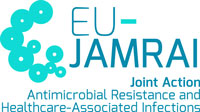Digital guide to select the best training method for AMR capacity-building interventions
Welcome to the digital guide to select the best training method for AMR capacity-building interventions
This guide is a practical and user-friendly resource designed to support the planning and delivery of effective training programs on antimicrobial resistance (AMR). It helps you identify and choose innovative, evidence-based methodologies tailored to adult learners, across a wide range of AMR-related topics and within the One Health framework.
Whether you’re designing AMR training interventions for policymakers, healthcare professionals, antimicrobial manufacturers, pharmacists, food producers, wastewater managers, researchers, or educators, this guide provides structured, expert-informed recommendations to support impactful and relevant training.
With easy-to-use filters, you can explore and match the most suitable options from 25 validated, innovative training methods—tailored to your audience, objectives, and available resources—ensuring each intervention is targeted, effective, and fit for purpose.
Ready to strengthen your role in capacity building and contribute to tackling AMR more effectively? Dive into the tool now!
Select the best training method for your intervention
Use this filter-based tool to find the most suitable training methods for your AMR intervention. Simply enter your target audience, available resources, and key training characteristics—and the tool will guide you to a tailored selection of effective, evidence-based methods.
Explore the most suitable training methods and learn how to implement and assess your intervention
Discover a curated glossary of 25 innovative training methods for AMR education, selected through rigorous research. Each suggested method comes with a clear, concise description and practical guidance. Its suitability is framed in relation to the AMR training landscape, the resources available, and the professional profiles it best supports.
Access step-by-step implementation and assessment guides for each method—designed for immediate use in real-world AMR training settings. Each guide also includes a prototype to illustrate how the method can be applied effectively in practice.
Advance search
| Method | Definition | Suitability |
|---|
